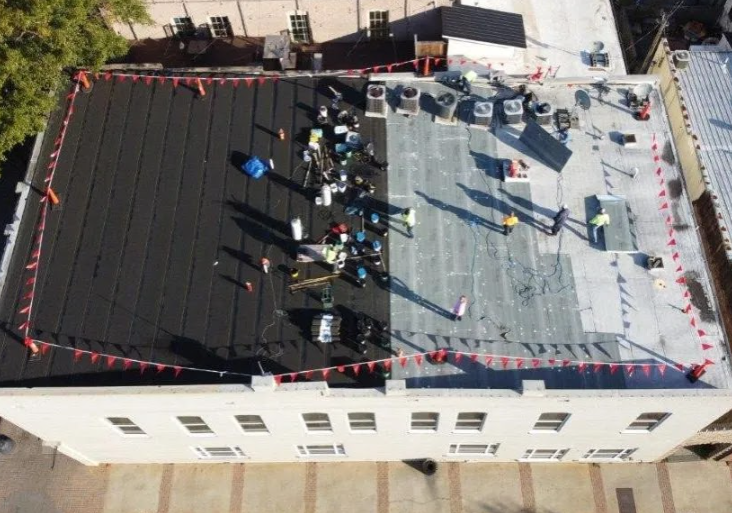Do you have any roofing projects going on? Do you know what to prioritize in construction management for a roofing project? Here’s a breakdown of what to expect when doing construction management for shingled roofs.
Roofing projects tend to take months to complete and that can seem like a big commitment when managing a project. Good construction management is crucial to having a project that goes smoothly, finishes on time and within budget. We break construction management down to three stages to help ensure a successful project:
- Pre-construction
- Construction
- Post-construction
Pre-construction: This stage is the most important stage. Without a well thought out plan with clear and concise communication your chances of success are not good. Pre-construction management should start from the moment work is awarded and the contract is signed. In these early phases of scheduling it is a great time to figure out the best way to communicate with the contractor, property manager and tenants; establishing this early on keeps everyone in the loop and expectations are clearly communicated throughout the project.
When scheduling roofing work it is important to first have a good understanding of what type of property it is, for example residential or industrial. As well as any noise ordinances that are in place by the property or city, so those can be taken into consideration and clear working hours can be communicated when writing up schedules and phasing maps.
Because roofing projects can span over months a staging area for each phase will need to be established. The contractor uses the staging areas for porta potties, dumpsters, equipment and new materials that will need to be stored on site throughout the project.
Once a clear schedule is agreed upon, then phasing maps and reminders should be sent to the property manager and tenants. On most projects we try to send out these notices approximately a month, two weeks, and a few days before a project begins.This ensures everyone is well notified of the project.
Construction: This stage of construction management is focused on when the work is in progress. Being on site everyday for a roofing project is not necessary, but being on site during specific times during a roofing project makes a difference. This is usually once a week or every two weeks. Important times to visit the site include:
- During demolition: This is a critical phase where change orders, particularly regarding decking and insulation, may arise. Being on-site allows for accurate documentation of required changes.
- Before the next billing date: Checking the progress of the project ensures accurate billing based on completed work, as multiple billings may occur throughout the roofing project.
- Near the completion of each phase: Documenting the finished work and addressing any issues before transitioning to the next phase can help to prevent an issue from happening in other areas and minimize backtracking and a long punch list.
- The final job walk: Documenting the finalized work, creating a punch list, and obtaining necessary permits and warranties are essential tasks at this stage.
During on-site inspections for shingled roofs, specific aspects to check include:
- Proper installation of ice and water barriers according to manufacturer specifications for installation. (this can vary depending on where you are in the country.)
- Enhanced fastener patterns at corners and the perimeter, if required.
- Correct flashing and waterproofing around edges and penetrations.
- Properly raised and protected conduits and curbs.
- Coping installed around perimeters of HVAC units.
Post-construction: This stage involves completing remaining tasks and ensuring all necessary approvals and documentation are obtained. Starting with a site walk with the contractor; addressing anything that can be taken care of right away and creating a punch list of the items that need to be completed at another time. Then scheduling inspections with the city to sign off on permits and obtaining warranties from the manufacturer. Last but not least issuing warranty letters and obtaining lien releases for completed work.
Managing roofing projects can be long and challenging, but clear communication, effective scheduling, and knowing crucial times to be on-site can help you use your time more efficiently and keep a project on track.




